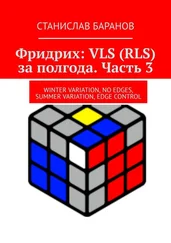Alex Marcham - Understanding Infrastructure Edge Computing
Здесь есть возможность читать онлайн «Alex Marcham - Understanding Infrastructure Edge Computing» — ознакомительный отрывок электронной книги совершенно бесплатно, а после прочтения отрывка купить полную версию. В некоторых случаях можно слушать аудио, скачать через торрент в формате fb2 и присутствует краткое содержание. Жанр: unrecognised, на английском языке. Описание произведения, (предисловие) а так же отзывы посетителей доступны на портале библиотеки ЛибКат.
- Название:Understanding Infrastructure Edge Computing
- Автор:
- Жанр:
- Год:неизвестен
- ISBN:нет данных
- Рейтинг книги:4 / 5. Голосов: 1
-
Избранное:Добавить в избранное
- Отзывы:
-
Ваша оценка:
- 80
- 1
- 2
- 3
- 4
- 5
Understanding Infrastructure Edge Computing: краткое содержание, описание и аннотация
Предлагаем к чтению аннотацию, описание, краткое содержание или предисловие (зависит от того, что написал сам автор книги «Understanding Infrastructure Edge Computing»). Если вы не нашли необходимую информацию о книге — напишите в комментариях, мы постараемся отыскать её.
Understanding Infrastructure Edge Computing
infrastructure edge computing
Understanding Infrastructure Edge Computing
Understanding Infrastructure Edge Computing — читать онлайн ознакомительный отрывок
Ниже представлен текст книги, разбитый по страницам. Система сохранения места последней прочитанной страницы, позволяет с удобством читать онлайн бесплатно книгу «Understanding Infrastructure Edge Computing», без необходимости каждый раз заново искать на чём Вы остановились. Поставьте закладку, и сможете в любой момент перейти на страницу, на которой закончили чтение.
Интервал:
Закладка:
Routing traffic through a network to its destination relies on an effective way of calculating the best path to that destination. There are many ways of determining what that best path is and which set of metrics should be used to characterise the desirability of each endpoint to endpoint connection which, combined, creates the network as a whole. Early examples of IGP protocols such as Routing Information Protocol (RIP) used a simple metric of hop count to determine the best path for traffic from its source to its destination. In this context, a hop was defined as a layer 3 endpoint, and the lower the number of hops on a network path, the faster it was assumed the path would be. In reality this simplistic metric does not capture the details of the network such as link speed, the use at that time of the links between endpoints, available endpoint routing capability, or other factors.
These limitations led the early routing protocols such as RIP to provide suboptimal routing decisions. This issue spurred the development of routing protocols which used more sophisticated measures of understanding the status of each link in the network and calculating the optimal path from source to destination for traffic. Edsger W. Dijkstra created the Shortest Path First (SPF) algorithm in 1956 [2]. This algorithm rapidly finds the shortest path between two given nodes in a graph, and its use in communications networks was studied since shortly after its inception to improve their efficiency.
Two examples of commonly used modern IGPs are Open Shortest Path First (OSPF) and Intermediate System to Intermediate System (IS‐IS). Both of these protocols are used today on large‐scale internal networks, and both use the SPF algorithm. The choice of which specific IGP to use on a network is a decision to be made based on the individual requirements of the specific network, which draws on a wide range of criteria that will not be fully described in this book; but for large‐scale internal networks IS‐IS is often preferred over OSPF. Regardless, both of these protocols perform the same function in the network and allow efficient routing to be performed that takes into account a more realistic and detailed view of the network topology than other preceding protocols were capable of, such as RIP.
As has been previously described, the internet is a network of networks and so as traffic is routed to its destination, it is likely to cross several different networks, each of which are operated by different entities. While an IGP provides the internal network of one of these network operator entities with information on the topology of the network, when the traffic must egress to an external network, an EGP is required. Much like how an IGP uses information from each router on an internal network to create a topological view of the network, such as the status of each router’s interfaces and the many subnetworks that each router may be connected to, an EGP allows a router in one network to inform a router in another network of the destinations that are reachable through that network and various characteristics of paths that it can provide to peer networks to deliver traffic to those destinations.
Without an EGP, each internal network along the multi‐network path between the source and the destination of a particular traffic flow would be flying blind. An EGP provides each network with an understanding of the paths available to it through external networks. With this information, each network can make an informed decision on which path to send traffic, optimising for performance, cost, additional services, or any key preference that the network operator has due to business need.
The most common EGP in use is the Border Gateway Protocol (BGP). The BGP was originally introduced to the internet in 1994 and has seen several iterations over time, resulting in the current version (Border Gateway Protocol version 4 (BGP4)), which forms the underpinning of the global IPv4 and IPv6 routing system the internet relies on to function. Although considerably older than many of the users of the internet today, BGP has proven to be a scalable protocol and a large part of the ongoing success of the modern internet.
One of the key aspects of BGP is its routing table. Although all routing protocols maintain a routing table of some type, which is a store of known destination networks and the metrics of the various paths which can be used to reach them that are known to that network endpoint, BGP is unique in that as it is the dominant EGP in use today, the size of the total routing table is orders of magnitude larger than that encountered by instances of IGPs, even compared to very large internal networks. Separate routing tables are maintained for IPv4 and IPv6, despite BGP being used for both protocols.
This is typically not an issue but has in some cases resulted in the BGP routing table exhausting the memory resources available in some routers. One technique to address this is route summarisation, where many more specific routes can be addressed as a single summary route, similar to how in a library all book titles starting with E can be used to represent all the books starting with Ea, Ex, or Es. During this section, the term subnetwork is used; this refers to a specific range of routable address space, such as books starting with Ex, to continue our library example, rather than everything titled E.
Another key concept in BGP is that of the autonomous system (AS). Each AS represents a single and unique administrative network domain that is owned and operated by a specific network operator, distinct from any other network domain. An AS is identified by a unique number which is assigned to it and which is used to differentiate one AS from another. Interoperation between networks using BGP uses these AS numbers for exactly that purpose, and people who spend a lot of time arranging internetwork connectivity will typically refer to external networks by their BGP AS numbers as well.
As BGP is used to route traffic between networks that are under the control of different operators, the protocol includes a set of capabilities to route traffic based not only on what is calculated to be the best path towards the destination in terms of performance (even though BGP’s measurements of performance are not as advanced as those of an IGP in most cases) but also based on the explicit preference of both network operators. This means that any business agreements they have created in regard to the routing of each other’s traffic can be implemented between their networks by BGP. The reasons for these arrangements are many, and they have helped spur the growth of the internet.
On each BGP router, the BGP protocol allows the configuration of the local preference and the multi exit discriminator (MED) values. Although both of these values are used to directly influence routing decisions, they operate from two different sides. As the sender of traffic, one BGP router may have a local preference value configured which instructs it to use a specific route to reach a destination, and concurrently the MED value configured on the receiver of traffic allows that router to indicate to the sender which path it would prefer to receive traffic on, which is entering its AS. Although the effect of the MED value can be overridden by any of its BGP peers, this feature allows a BGP AS to attempt to influence the paths that traffic inbound to the AS takes. BGP path selection is a detailed topic itself, but the concepts in this section will provide the required background for later sections in this book.
3.6.3 Routing Process
To contextualise all of the routing information presented so far in this chapter, let us use an end‐to‐end example of traffic being routed across multiple networks from its source to its destination (see Figure 3.1). In this example, traffic will flow from a source on the left of the diagram to a destination on the right.
Читать дальшеИнтервал:
Закладка:
Похожие книги на «Understanding Infrastructure Edge Computing»
Представляем Вашему вниманию похожие книги на «Understanding Infrastructure Edge Computing» списком для выбора. Мы отобрали схожую по названию и смыслу литературу в надежде предоставить читателям больше вариантов отыскать новые, интересные, ещё непрочитанные произведения.
Обсуждение, отзывы о книге «Understanding Infrastructure Edge Computing» и просто собственные мнения читателей. Оставьте ваши комментарии, напишите, что Вы думаете о произведении, его смысле или главных героях. Укажите что конкретно понравилось, а что нет, и почему Вы так считаете.












